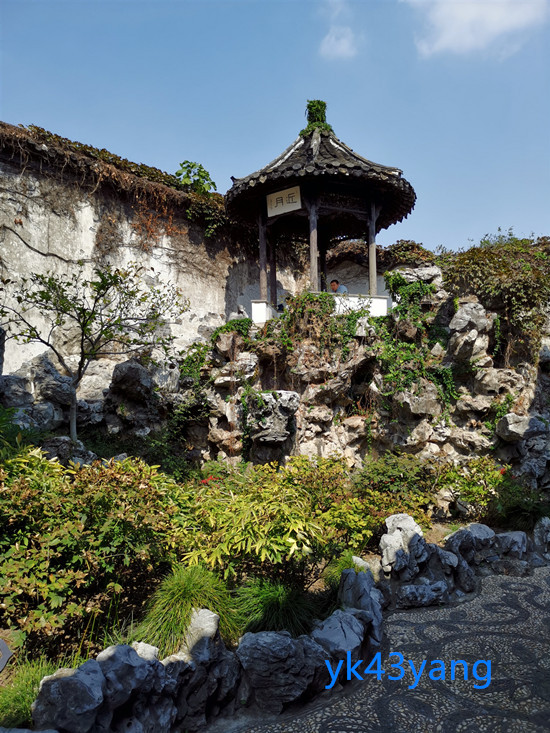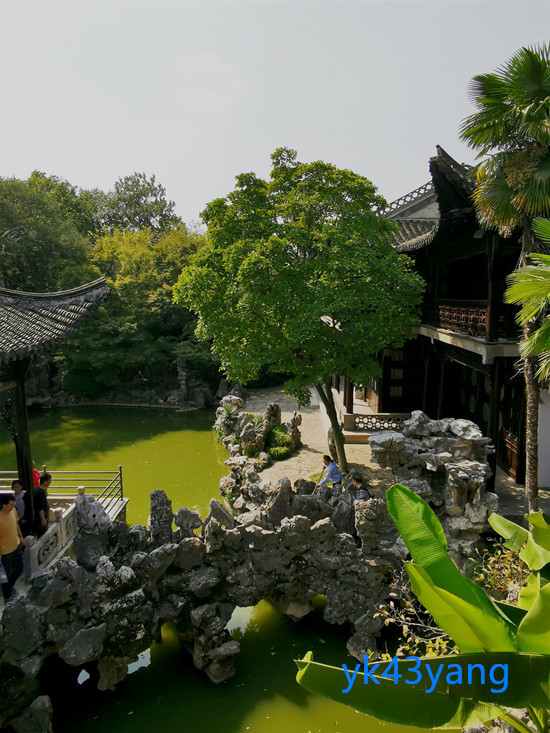Yangzhou Travel Notes (1)--He Yuan (Part 1)


Dried silk is extremely ordinary, but it is a masterpiece of Yangzhou cuisine. "Adding thousands of threads and piles of fine threads" is important in cutting skills and "feeding". It is said that the owner of Yangzhou hotel assessed the chef to taste this "Big Boiled Dried Silk" dish.
Lion's head is also the signature dish of Shanghai's local cuisine and Su Xi's cuisine. When I was a child, my mother was good at sitting on this braised lion head. However, unlike Jiangnan cuisine, the lion's head in Yangzhou cuisine is not fried in oil, but steamed. Maybe he was used to the braised lion heads made by his mother, so he felt very ordinary about steamed lion heads.
Although Yipin seafood tastes good, it is dissatisfied with the content of its food: it actually uses a lot of ham sausages to make up for it!
Yangzhou fried rice is the most characteristic dish of Yangzhou. This is the most popular fried rice in Jiangnan.
After lunch, go to Heyuan.
Yangzhou has been to many times and has been to some famous gardens. However, this is He Yuan's first time here.
The official name of He Yuan is "Jixiao Villa".
In the ninth year of Guangxu of the Qing Dynasty (1883), He Zhiqian, who served as the supervisor of Huangde Road in the Han Dynasty in Hubei Province (which governed Hankou, Huangpi, and De 'an regions) and the supervisor of Jianghan Pass, resigned and returned to Yangzhou. He purchased Wu's "Pianshan House" and surrounding land, and began to build Jixiao Villa. It took 13 years to build this "Jixiao Villa", known as the "First Garden of the Evening Spring Festival".
He Weijian, also known as Zhiyu, was from Wangjiang County, Anhui Province. Born into a family of officials for generations. His father, He Junguan, went to Jiangsu as governor and was once awarded a first-class title in the court.
He Zhizhen was born in the 15th year of Daoguang (1835). She was a student of the Imperial College and a doctor of the Ministry of Revenue. She was promoted many times. Not long after he served as the Hubei Provincial Justice, he took over from the Han Dynasty Huang Dedao and concurrently served as the supervisor of Hanjiang Pass. The court awarded him a first-class title, granted him a high-ranking official title, and promoted him to a Guanglu official.
He Zhizhen chose to resign and retire at a time when her career was going smoothly.
In the ninth year of Guangxu (1883), at the age of 49, he retired to Yangzhou. This "Jixiao Villa" was built.
In 1901, after his mother passed away, He Zhizhen moved her family to Shanghai. Eight years later, He Zhizhen passed away.
After He Yuan was sold, its owners changed several times. During the Anti-Japanese War, He Yuan was occupied by the puppet army Sun Liangcheng. After the victory of the Anti-Japanese War, He Yuan lent it to Zhu Tong Middle School to resume classes.
He Garden is divided into four parts: East Garden, West Garden, Garden Residence Courtyard and Shiban Mountain House.
Come to He Garden, which is the east gate of the newly built scenic spot. The "First Garden of the Evening Spring Festival" on the wall was inscribed by Luo Zhewen, a student of Liang Sicheng. The word "He Yuan" on the door plaque was written by He Shaoji in the Qing Dynasty.

Entering the gate is a small courtyard. Enter the East Garden through this moon cave door. The "Jixiao Mountain Villa" engraved on the gate of the moon cave was He Zhiqian's personal title at that time. The word "Ji Xiao" is taken from Tao Yuanming's "Returning to the South Window to send Ao, and climbing Donggao to ease the roar."

Behind the small bridge is the Peony Hall. The brick carving on the gable wall is exactly "Wind Blows Peony".

The Taihu Lake stone in front of the Peony Hall is called the "Stone Screen", also known as the "Point Stone". The "stone screen" of He Yuan, the "stalactite" of Slender West Lake, the "Zhangrenzun" of Lotus Pond Park and the "Fishbone Stone" of Geyuan are collectively called Yangzhou's "Four Wonders".
There are peony ponds and peony flowers around the Peony Hall. On the occasion of "Fireworks under Yangzhou in March", the peonies in Heyuan are in full bloom, attracting countless tourists.
The more than 60-meter-long "Tien Bishan" road on the wall of the East Garden is extremely spectacular. Posting Bishan Mountain is a common method in Jiangnan gardens. With this Bishan Road, the originally boring high walls of the deep courtyard have been transformed into an "urban mountain forest" with a myriad of scenery.

There is a "wind reception pavilion" in front of Bishan Mountain. The word "Jie Feng" on the plaque was inscribed by Yangzhou calligrapher Yang Xiaoyang (the word suppressed).

Another pavilion posted on Bishan is "Near Moon".

Arrived at the main building of the East Garden-the Boat Hall.

The boat hall is shaped like a boat, with pebbles and tiles paved all around it. The water-like patterns symbolize the sparkling water surface. The stone corridor in front of the hall symbolizes the springboard for boarding the ship.
The boat hall is a single-eared mountain top with windows on all sides and corridors around it, symbolizing the deck of the ship. On the front porch column, there is a woodcut couplet hanging: "The moon serves as a guest, and the flowers serve as the four walls and the boat serves as the home."
The horizontal plaque on the front of the hall is titled "Fu Hai Xuan".

The word "pluck the sea" comes from Confucius's saying,"If the Tao does not work, I will ride a pluck in the sea." The metaphor is also the reason why the master resigned from office back then!
From the hiking trail on Tien Bishan, you can directly climb to the "Reading Building" on the northeast corner of Dongyuan.


This is where He Zhiyan's eldest son, He Shenghao, studied. He Shenghao studied bravely and hard and lived up to his father's expectations. He was elected in the 1882 provincial examination and ranked sixth in the 2nd palace examination in 1890. He personally appointed the Hanlin Academy officials, achieving the glory of a grandfather and grandson.
From the upper floor of the reading building, directly enter the second floor of the Fudao Corridor and enter the West Garden of He Garden.


Fudao Promenade is a very distinctive building in He Garden. The so-called complex road means that a partition wall is sandwiched in the veranda, dividing the veranda into two along the axis, and different scenery can be seen on both sides of the veranda.
The Fudao Corridor in He Yuan is divided into two floors, which Yangzhou people call "Chuanlou". The compound corridor of He Garden divides the east and west gardens, and connects the east and west gardens. The idea is clever and fascinating.
The entire corridor surrounds the entire West Garden and also leads to the Butterfly Hall. Walking on it, you can enjoy all the scenery in the garden. The corridor has a total length of more than 1500 meters, exceeding the promenade of the Summer Palace, so it is known as the "No. 1 Corridor in the World".
Overlooking the West Garden from the corridor, there is a pool in the center. There is a pavilion built in the pool. This is the Shuixin Pavilion, known as the "No. 1 Pavilion in the World".


Previous Article:Romantic weekend at amusement park| and his one-day trip to Yangzhou's Dream City
Next Article:A 3-day and 2-night hot spring trip in Yangzhou in autumn and winter is so pleasant!
